AFRICA
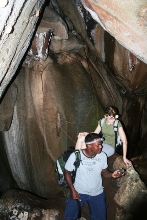 Bringing Bats off the Brink: Conservation Action for the Critically Endangered Seychelles Sheath-tailed Bat (2006)
Bringing Bats off the Brink: Conservation Action for the Critically Endangered Seychelles Sheath-tailed Bat (2006)
The Seychelles sheath-tailed bat (Coleura seychellensis) is one of only two endemic mammals found on the Seychelles Islands. The current project has been investigating possible causes for the decline of the Seychelles sheath-tailed bat, including the use of pesticides, predation by the introduced barn owl and human disturbance and destruction of roosts and foraging sites.
Ecology and Conservation of Aberdare cisticola in the Mau Narok-Molo Grasslands, Kenya (2006)
The Aberdare cisticola is listed as globally endangered in the IUCN red list. It inhabits moist highland grassland on both sides of the Rift Valley, at Molo, Mau Narok and the Aberdare mountains, in Central Kenya. The team carried out surveys on the current population, habitat extent and threats facing the species to determine the local distribution, population and threat status of the cisticola at the Molo-Mau Narok grasslands.
Operation Moheli, Comoros (2006)
Recent studies by the Operation Moheli team have revealed exciting new insights into the consumption and trade of turtle meat on the island. Poachers, ex-poachers, consumers and law enforcement officers throughout the island of Moheli were interviewed by team members to better understand current poaching threats.
Mpingo Conservation Project, Tanzania (2004)
Kikole village has continued to make significant progress this quarter, and has begun to truly realize the benefits of the Village Land Forest Reserve (VLFR). The Mpingo team helped Kikole VNRC count trees in the VLFR to obtain an accurate figure that could provide the basis for some initial sustainable harvests and facilitated training on how to deal with human-elephant conflict.
Studying the Impacts of Plant Exploitation on Habitat and Gorilla Populations, DRC (2001)
Fieldwork has been conducted in the western portion of the Itombwe Forest inside the Irangi-Zombe polygon. The activities were carried out during the rainy season and three tracks of gorillas in movement were observed on Mount Nakabuza.
Read more about projects in Africa...
ASIA / PACIFIC
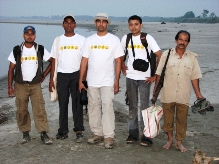 Turtles and Tortoises of Northeast India: Saving them from Extinction (2007)
Turtles and Tortoises of Northeast India: Saving them from Extinction (2007)
In February, team members made a field trip to Kaziranga National Park in Assam, India and spent time surveying and identifying turtles in wetland areas of the park.
Breeding Biology of Black Shama (Copsychus cebuensis), Philippines (2006)
For the first time research is being conducted on the breeding biology of the Black Shama (C. cebuensis). The characteristics of the nests and eggs provide information on the breeding biology and nesting habitat selection of this endemic bird.
Gangetic Dolphin Research and Conservation Team, India (2006)
Oil India Ltd, a premier petroleum company of India, plans to conduct seismic surveys in Eastern Assam in an area consisting mainly of river bed and islands of the Brahmaputra River. In October and November of 2006, the Dolphin Conservation Team undertook a campaign to demand more intensive impact assessments and to save the Gangetic dolphin in the Brahmaputra river system.
Inventory, Distribution and Conservation of the Philippine Forest Turtle, Palawan, Philippines (2006)
Two municipalities in Palawan, Narra and Espanola, have been surveyed by the team to gather data on the critically endangered Philippine forest turtle and they recently began additional surveys. The turtle was discovered in the southernmost municipality of Palawan, where it has never previously been reported.
Conservation Status of the Montaine Slender Loris, Horton Plains National Park, Sri Lanka (2006)
Baseline surveys of the Montane slender loris (Loris tardigradus nycticeboides) have been taking place, including behaviour and morphology studies and distribution mapping. The mapping of slender loris in the Horton Plain National Park has been completed and results show that one third of this 31 square kilometer park contains suitable habitat for the species.
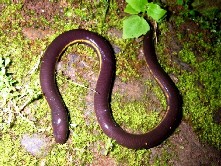 Frogs Of Gede-Pangrango, West Java, Indonesia (2006)
Frogs Of Gede-Pangrango, West Java, Indonesia (2006)
Frog survey monitoring began in November and finished in March. The team covered 7 of 10 proposed locations, and thanks to the help of a national park officer, they encountered a female caecilian Ichthyophis hypocyaneus, the first record of caecilian in Mount Gede Pangrango National Park.
Mario Soto: Crocodile Hunter, Farmer, Conservationist (CROC Project, Philippines 2005)
In the municipality of San Mariano, the Philippine crocodile has become a symbol of local environmental stewardship. Nobody personified this transformation better than Mario Soto. From being a crocodile hunter he became an outspoken conservationist.
Calayan Rail, Philippines (2005)
The Calayan Rail Project was conducted by Isla Biodiversity Conservation Inc. (ISLA), an environmental organization established by members of the pioneering expedition to the Babuyan Islands in 2004 that discovered the Calayan Rail (Gallirallus calayanensis). The goal of the project was to initiate a long-term program for the conservation of the Calayan Rail and other wildlife and natural habitats of Calayan Island.
Distribution, Habitat Preference and Conservation Status of Endemic Giant Rats on Choiseul Island, Solomon Islands (2005)
The aim of this project was to study the distribution, habitat preferences and conservation status of native terrestrial murid rodents Solomys ponceleti and S. salebrosus around Choiseul Island. The study was carried out in at different sites around the island of Choiseul including the montane areas above 700m on Mt Maetambe.
Behavioural Ecology and Conservation of Rhinopithecus avunculus in Vietnam (2004)
A study on the ecology and behaviour of Rhinopithecus avunculus was carried out in Khau Ca Forest, Ha Giang Province over the past year. This is one of the three known ranges of R. avunculus in Vietnam and contains a population of 90 individuals.
Conservation of Napoleon Wrasses and Rare Corals at Namu Atoll, Marshall Islands (2004)
After battling a number of logistical challenges getting the team and supplies to Rongelap Island for survey work, a skeleton crew finally arrived in Rongelap in November. The team set up a monitoring programme for Rongelap Island and its immediate surroundings.
Effect of Habitat Size on Reproductive Success of Myristicaceae: An Endangered Tree Species of Western Ghats, India (2003)
Myristicaceae, or Gymnacranthera farquharina, is a swamp adapted tree species of Western Ghats, India. The species used to reproduce mainly through sexual means. The study has indicated that due to recent human induced disturbances, the species demography has been negatively impacted.
Nepenthes, Indonesia (2002)
The Nepenthes team recently distributed their nepenthes guide book to several members of the Carnivorous Plant Specialist Group of IUCN, as well as local communities, the Kerinci Seblat National Park and conservation governmental units in several locations of Sumatra; copies were also sent to the Indonesian Sciences Institution.
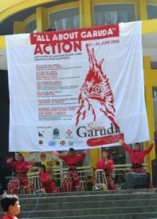 Project Garuda, Indonesia (2002)
Project Garuda, Indonesia (2002)
The team is happy to report the release of a Javan Hawk-eagle, which was released into the wild on January 23rd after four months in captivity. The eagle is approximately three years of age and came from Cikananga Animal Rescue Center, which takes in animals confiscated by the government for illegal trade.
Conservation of Waterbirds and Their Habitat in Chongming Island, China (2001)
Collaborating with Chongming Dongtan Nature Reserve, the group is studying waterbirds and their habitats in aquacultural ponds, to estimate the function of artificial wetlands in waterbird conservation.
2006 Scholarship Recipient Dian Risdianto, University of Indonesia, MSc Conservation Biology
Dian was awarded a 2006 BP Conservation Programme Scholarship to attend an MSc program in Conservation Biology at the University of Indonesia. Dians Masters research will focus on strategies for effective Sumatran Tiger conservation, management and protection.
Read more about projects in Asia...
EURASIA
Finding Out Number and Distribution of Rare Birds in Western Siberia (2006)
Research took place in the forest-steppe and steppe zones in the southeastern part of Western Siberia, located within Siberian Federal District of Russian Federation. This region consists of two large geographical zones: Baraba forest-steppe and Kulunda steppe. The team conducted 48 surveys to gather data on Oxyura leucocephala,Chettusia gregaria and other rare bird species.
 Conservation of Globally Threatened Bird Species, Azerbaijan (2004)
Conservation of Globally Threatened Bird Species, Azerbaijan (2004)
The project to conserve globally threatened birds in Azerbaijan began in May 2006 with the aim to provide theoretical and practical training to promote the conservation of birds in the region. With the help of ornithologists from Azerbaijan Ornithological Society, summer camps were held to train people to identify and monitor Caucasian Black Grouse in Zagatala and Guba uplands.
Daggel, Russia (2001)
In January and February of this year, the team conducted a small project practical protection of wintering birds in Important Bird Areas (IBAs) of Daghestan. The project is part of a larger framework looking at IBAs and threatened bird species in the Russian part of Caucasus through inventory, protection and community management.
Read more about projects in Eurasia...
LATIN AMERICA / CARIBBEAN
Assessment of Seabird Bycatch in Peruvian Artisanal Fisheries, Peru (2007)
Pro Delphinus conducted an assessment of seabird bycatch in Peruvian artisanal fisheries, which became possible thanks to a BP award granted in 2005. The projects initial activities included fisherman interviews, recovery of seabird bands and educational workshops, and with renewed support they will to work to make Perus artisanal fleet sustainable, responsible and seabird friendly.
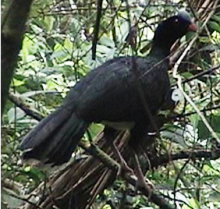 Assessment and Conservation of the Southern Horned Curassow, Peru (2006)
Assessment and Conservation of the Southern Horned Curassow, Peru (2006)
The team spent the past year conducting research in the Sira Mountains studying the Peruvian Horned Curassow (Pauxi unicornis koepckeae). They wanted to find out more about this beautiful and almost unknown species and its habitat and conducted further bird and mammal surveys to determine other important conservation species found in this wonderful place.
Ecology and Conservation of Sharks in a Nursery Area, São Paulo State, Brazil (2006)
After a delay in the project due to a long period of adverse fishing conditions and Brazilian presidential elections, the team met with local authorities and went back to the ecology project and shark conservation activities. The period from July to October 2006 was the worst period for artisanal fishing in the last few years.
Rethinking Participatory Management & Biodiversity Conservation: Towards an Ecoregion-based Design in Trinidad & Tobago Ainka Granderson, RFP Grantee (2006)
Using the recent ecoregional classification developed for Trinidad and Tobago, Ainka Granderson designed an analytical framework to determine effective participatory strategies suited to conserving its natural ecosystems and the conditions under which they operate best. Ainka plans to examine the potential of participatory strategies proposed for Trinidad and Tobagos ecoregions based on other Caribbean experience.
Red Siskin (Carduelis cucullata) Research and Conservation Programme, Guyana (2005)
The Red Siskin team is planning to carry out a field survey training workshop for students from nine local schools. The training will include surveying methodologies, as well as GPS, binocular and walkie-talkie use. The team intends to band birds so they can better monitor numbers and bird movement over other transects.
YARE Project, Colombia (2005)
YARE team members are doing very well. A mammal project on the Andean Bear is being organized by one team member in collaboration with one of the major universities in Colombia; the ornithologists from the team are preparing a big release with several new discoveries on birds.
Conservation of Cuban Cacti (2004)
In January 2007, the team surveyed populations containing the six species of Melocactus growing in southeast Cuba, the region that contains the richest cactus diversity in the country. The aim of the survey was to establish conservation priorities for these species.
Alder Amazon Project, Argentina (2003)
We are concluding another breeding season with Alder Amazon at El Rey National Park, and Santa Barbara Mountain Range. Much of the information obtained with the support of BP Conservation Programme was published in the 1st issue of Oryx in 2007.
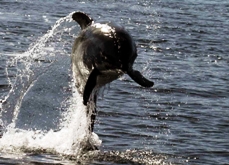 Ecology and Conservation of the Chilean Dolphin in Southern Chile (2002)
Ecology and Conservation of the Chilean Dolphin in Southern Chile (2002)
Greetings from southern Chile! It has been by far the most exciting and amazing season we have had so far. Over the past year we have been working towards the design of a marine protected area in southern Chile what will be the biggest marine park in South America.
Read more about projects in Latin America and the Caribbean...
MIDDLE EAST

